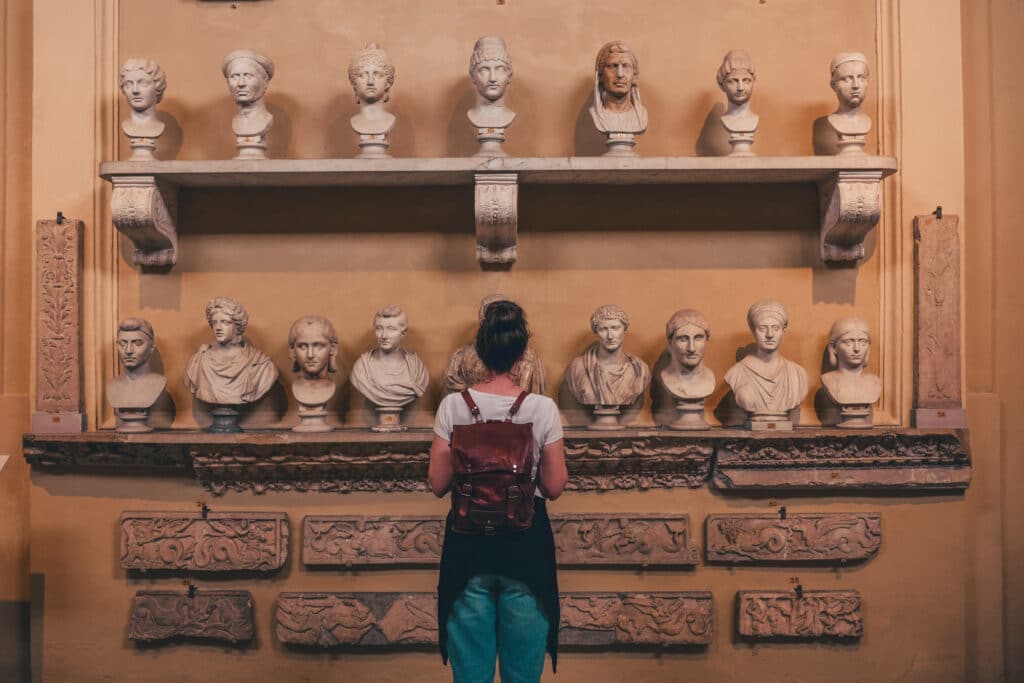Why museum mission and vision are critical
The museum mission statement is the beating heart of any cultural institution. It defines the museum’s main purpose, directing its daily activities and strategic choices. A clear vision, on the other hand, paints the horizon toward which the museum wishes to evolve over time.
According to a study by the American Alliance of Museums, institutions that have a well-defined mission and vision show a greater ability to adapt to changes in the cultural environment and attract new audience segments. This strategic approach contributes significantly to the cultural growth of the area.
How to define an effective museum mission statement
1. Analyze the context and heritage
The mission should reflect the specificity of the museum’s heritage. Ask yourself, “What cultural treasures do we hold? What stories do we want to tell?” Engaging experts and stakeholders can be helpful in gathering valuable perspectives.
Practical example: the Museum of the Twentieth Century in Milan has built its mission around the valorization of 20th-century Italian art, positioning itself as a reference point for enthusiasts of the period.
2. Identify the target audience
A museum that wants to grow must have a thorough understanding of those who visit its halls. The mission should reflect a commitment to meeting the needs of diverse visitors: families, students, tourists, experts.
Practical cue: Creating surveys or focus groups can help gather useful information about audience desires.
3. Align mission with museum strategy
The museum mission must not only be inspirational but also concrete. It must provide a clear guide for defining a sustainable museum strategy.
Example: the Rijksmuseum in Amsterdam has made a commitment to digitization and accessibility part of its mission by investing in innovative technology projects.
Museum vision: how to look to the future
1. Imagining a museum of the future
The vision must be bold and ambitious, offering a clear perspective on where the museum wants to go.
Guiding question: “How do we want the museum to be perceived in 10 years?”
2. Set long-term goals
The vision should include measurable goals to guide the museum’s cultural growth. These may relate to expanding collections, diversifying educational activities, or increasing international collaborations.
Example: the British Museum has set as its goal the promotion of intercultural dialogue by investing in temporary exhibitions and global educational projects.

Strategies for implementing museum mission and vision
1. Digitization and innovation
Investing in technologies such as amuseapp’s AI-based audio guides can make the museum more accessible and inclusive.
2. Diversified educational programming
Offering activities for different audience segments helps strengthen the museum’s role in the cultural growth of the community.
Practical cue: Children’s workshops, expert lectures and thematic guided tours can expand cultural offerings.
3. Strategic communication
A winning museum strategy also includes effective communication, both online and offline. Using social media to tell the museum’s story and engage the public is essential.
Example: the MoMA uses Instagram not only to promote exhibitions, but also to offer educational content that stimulates the public’s curiosity.
Conclusion
Defining a museum mission and vision is not just a theoretical exercise, but a crucial step in guiding the museum’s cultural growth and strengthening its role in contemporary society. A clear mission guides daily choices, while an ambitious vision drives constant innovation and improvement.
amuseapp – the digital revolution for cultural places
amuseapp is more than just an audio guide-it is an innovative digital platform that transforms the visitor experience and helps museums increase revenues.
Customized itineraries with theArtificial Intelligence. Unlike traditional audio guides, amuseapp uses artificial intelligence to create customized itineraries based on the needs of each visitor: children, people with sensory disabilities, experts, students, and many other categories.
Accessibility in 30 languages. Today, only 20 percent of museums offer content in more than two languages. With amuseapp, cultural venues can break down this barrier, automatically generating text and audio in 30 languages and making cultural heritage accessible to everyone, everywhere.
Chatbot real-time virtual tour guide. Using a customized chatbot, amuseapp offers visitors an always-available virtual guide who can answer their questions and enrich the visitor experience.
Easy and safe donation collection. With amuseapp, cultural places can collect donations directly through the app, quickly, securely and intuitively.
Feedback for continuous improvement. amuseapp allows you to collect visitors’ opinions about the visitor experience, providing valuable data to optimize your services.
Available in app or web app mode. The amuseapp web app allows visitors to access the museum’s digital content without having to download any apps. The amuseapp mobile app is designed to offer a more advanced and customizable experience. By downloading it from the official stores, visitors can benefit from extra features.
One solution, multiple benefits. With amuseapp, cultural venues can offer an innovative, inclusive and interactive experience while improving their sustainability model.
Learn more about amuseapp.

